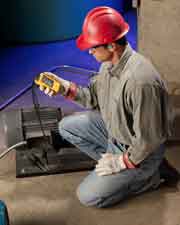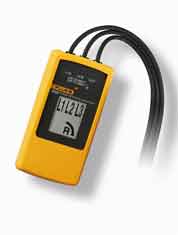There's an old saying that the first time you hook up a three-phase motor it will run backwards. If you're lucky, it will only make you look foolish. If you're not, it could severely damage expensive equipment and cost you or your employer substantial money.

Ruining compressors
Here's an example of what can go wrong. A public utility in the Northwest was installing a new piece of computerized switchgear. It was intended to service a rather large area that comprised both industrial customers and some miscellaneous commercial facilities. The crew doing the installation was experienced, but the piece of equipment was new to them. The foreman, who was responsible for specifying which leads were connected where, inadvertently reversed phases.
Once the utility had finished its work, it turned the power back on.
Down the road, at a major manufacturer, a whole set of screw compressors for the HVAC system - ranging from 25 to 50 hp - started running backwards. Screw compressors are lubricated by internal oil pumps, "and if they run backwards, they don't pump oil," said the manufacturer's maintenance chief. In a few seconds, all the compressors were toast. "Thank God our chillers didn't come on before we discovered the problem," said the maintenance chief, "because that would have been really bad."
The utility ended up paying for all new compressors, plus the rent on units brought in on a temporary basis. While it also did energy studies and set up a new, more efficient system for the customer, it still was left with egg on its face - and a large bill.
All of this could have been prevented, if the utility crew had better understood the instructions on the new equipment and had used a phase rotation indicator like the Fluke 9040 to check the phase rotation at the 480 volt output of the transformers that fed the compressors. Those few minutes would have saved the customer considerable downtime and the utility a pile of money.
Doing it right
A different utility, after many years of using the old-style rotating-disc units, changed out to Fluke 9040s instead. They use them most commonly after a meter base or transformer bank has been changed out, to make sure the rotation is correct before connecting the load. Interestingly, this isn't a consideration in a new installation, because then the responsibility falls on the customer's electrician to make sure the rotation is right before hooking up the motors. If he's wise, he'll have his own 9040.
The utility has now been using the 9040s for about three years. They were initially drawn to the tool because it was the only Category IV unit they could find. The need for this was made abundantly clear when customer electricians went to check the phase rotation on a transformer whose nameplate read 240 V a using rotating-disc phase unit. Unfortunately for them, the system voltage was actually 2400 V, and they smoked their phase rotation indicator. This got the utility people to thinking: "If it happened to them, and we have 2400 V secondaries in our system, there's a possibility that someone might misread a nameplate in our system. Let's go ahead and get a Category IV in case someone messes up."
So the utility bought 9040s. Some of the older technicians resisted at first, insisting they were more comfortable with the old rotating dots, but the younger ones are used to electronic devices. And what could be simpler: It's marked L1, L2, L3, red, white blue, so you can't easily go wrong.
More ruined equipment
Of course you have to actually use the 9040. One time the utility bought a new motor and relocated an existing meter base to power it, but the electrician didn't hook it up the way it had been, and while the meter base said red white and blue counterclockwise, it was actually clockwise. A technician checked rotation at another meter base, found it correct, and apparently assumed that this one would be the same. They plugged in a meter, threw the breaker, and ruined the motor.
Another time the job was to replace a bank of transformers with heavier units with heavier wire. Despite the fact that everyone on the job was experienced, for some reason no one took a rotation reading. They finished hooking everything up, plugged it in, turned it on…and then bought all new rotational equipment for the customer downstream. The amount that incident cost doesn't even compare to the cost for a new 9040 for everyone on the crew.

Standardizing on the Fluke 9040
Another utility had been using the old mechanical rotation devices that had been the industry standard for years, but they had started breaking down and even cross-phasing internally, and the manufacturer didn't respond quickly or even seem to take the safety issue as seriously as they might.
The meter technicians and linemen now use the 9040s to verify phase rotation on new installations and mark breaker panels with the existing rotation. Later, if they're troubleshooting an outage or do a routine swap, the crews will verify rotation both before and after, using those markings and the 9040. Tthe idea is to make sure to leave the customer with the same phase rotation. This check occurs inside transformers, at disconnects on meter panels, on the pole to verify overhead service, on overhead transformer banks, and in vaults to verify at the last disconnect point prior to feeding that source to the customer.
The utility maintenance chief has developed a fondness for Fluke equipment, and says it has proven its product over the years. The equipment, he says, is "made tough for this industry. These things are going to be dropped, get wet, get beat up, dropped from poles and out of pockets." And it's simple to use, with a yes or no answer. "It's about time we got something other than this mechanical stuff," he concludes.